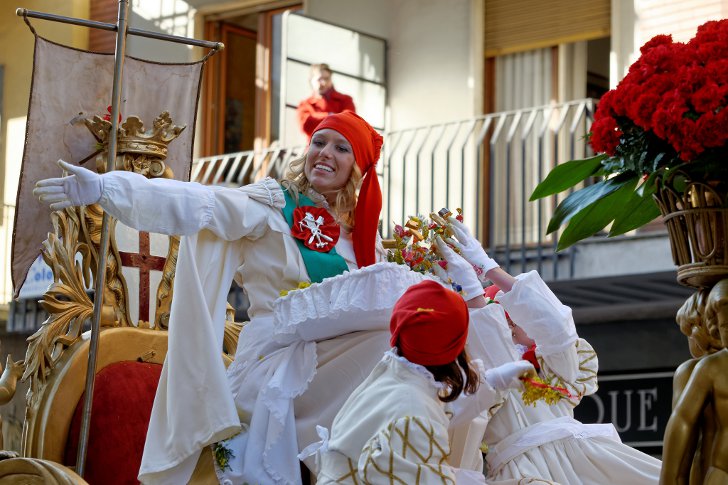The origins of Ivrea's Battle of the Oranges are unclear. According to popular legend, the event commemorates the defiance of the city's populace against the tyrant who once ruled Ivrea. The tyrant attempted to rape a young commoner named Violetta on the eve of her wedding, but the brave woman decapitated him. After the tyrant's death the townsfolk stormed and burned his palace.
The Battle of the Oranges supposedly recreates the storming of the palace and commemorates the liberation of the citizens. Each year, a young girl is chosen to portray Violetta, also known as la Mugnaia (miller's daughter). Horse-drawn carriages symbolize the tyrant's army and people throwing oranges are the townsfolk. Oranges represent the stones thrown at the tyrant's castle.
Interestingly, the Battle of the Oranges was originally the Battle of Beans. At some point, beans were replaced by apples, then by oranges. It is hard to understand why oranges were chosen as a “weapon” because Ivrea is located in the foothills of the Italian Alps where oranges don't even grow. Oranges used during the Battle mainly come from the leftovers of the winter crop in southern Italy, particularly Sicily.
The Battle involves several thousand people divided into nine teams. Each team has a uniform and a symbol. The Battle lasts for three Carnival days and can get pretty rough and sometimes even violent. Spectators are not allowed to throw oranges and wear red hats that protect them from getting oranges thrown directly at them. However, there's always the possibility of getting caught in the crossfire unless you hide behind the nets that are draped around the buildings.
The Carnival of Ivrea also features colorful parades, dances, firework displays, and more. Traditional Carnival characters include the Miller's daughter, the General and his staff, the Assistant Grand Chancellor. The General presides over the festivities and makes sure that everything runs smoothly.

Photo: MarioVare




